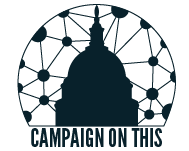If you turn on the news and unemployment is the topic of discussion, you may hear how the unemployment rate is below 6%. Considering recent past rates, this is a low number. However, this measurement of the unemployment rate is misleading because it overlooks the suffering of the long-term unemployed, as well as those who are depressingly underemployed. The Bureau of Labor Statistics actually uses six alternative measures for unemployment. These six measures highlight different facets of the unemployment rate. The unemployment rate that the White House, Congress, and media use to broadcast does not include the highly skilled individuals who work part-time in low skill jobs. These men and women are working, but not to their full capability.
When you factor in the underemployed, the unemployment rate becomes completely different number. The chart below outlines the six measures of unemployment calculated by the Bureau of Labor Statistics. The green line represents the U-3 ; the rate our government and media uses. The more comprehensive rate, including all six measure of unemployment, is the U-6. This rate takes into account anyone who has subsequently given up on finding a job, those who have stopped looking for work over the past four weeks , as well as those who work part-time or multiple part-time jobs. The U-6 represented by the red line, will always be much higher than the “official” unemployment rate. Introduced here is unemployment data provided by the Bureau of Labor Statistics from 1948-2015.
As shown in the data above, under President Obama the highest unemployment rate (U3 color line) was 10% during October 2009. The U6 color line shows that the actual unemployment rate was at 17.1%. By accurately accounting for all facets of unemployment it is shown that the unemployment rate is a much larger number than reported by the media.



